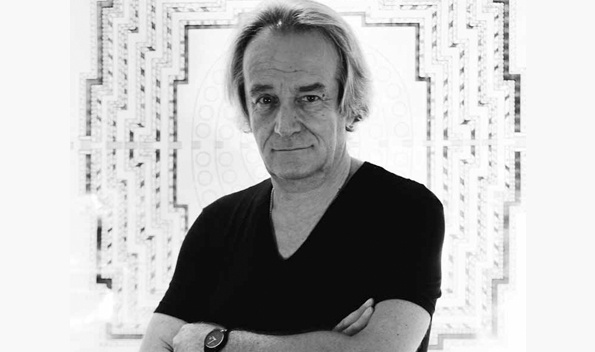Meet Dr. Titus Leber, an Austrian filmmaker who transformed Borobudur into interactive multimedia.
Do you consider yourself an expatriate in Indonesia?
Certainly. Even though I move around a lot, I lived the greater part of the last four years in Jakarta and Jogjakarta for my project.
How did you get into the film industry?
It started when I was 10 years old and had a dream to become a movie director; I filmed my first ‘Super 8’ kind of movie and made some short films with my very first 16mm camera. But really, my entrance to the film world was through classical music; I did a lot of what you would call today ‘extended classical music video clips’ about Schubert, Mozart, you name it. I used a special method of superimposed imagery, which was very avant-garde at the time. That got me awards and sent me places.
How have you developed since then?
I studied directing at the American Film Institute (AFI) in Hollywood and went back to Europe to do my first feature film which was accepted at the Cannes Film Festival. The Massachusetts Institute of Technology (MIT) apparently had seen my film and encouraged me to work there; they eventually gave me a grant and I became a research fellow. That was in 1984. I guess you could say this was ‘year no.1’ of interactive multimedia – they had just came up with touch screen technology which became the foundation of my work. As a movie director, I found multimedia very interesting; there are challenges in trying to integrate my audience interactively. To take it to the next level, I fused my knowledge of high-tech material from America and cultural values from Europe, that’s what I was eventually known for; large scale high-end cultural projects using interactive multimedia.
When did you first encounter Indonesia?
In 1991 where I was part of a UNESCO expedition tour. That was the first time I saw the majestic Borobudur temple.
Why did you take an interest in making Borobudur the subject of your interactive multimedia?
I was invited by the King of Thailand to do a big cultural project on the life and the teachings of the Buddha. I spent several years doing an interactive project linking the emerald Buddha temple in Bangkok to the original sites of Buddha’s life in India. With that background of knowledge on Buddhism and the culture surrounding it, we moved to Indonesia, home of the largest Buddhist temple in the world.
What aspect of Borobudur fascinates you most?
The fact that our ancestors told stories using the same means we do today; through writings and imagery. The Borobudur is essentially one big picture book, or if you prefer, one big movie. If you spend some time looking at the Borobudur, you may only see stones and some simple relief panels on it, but as the shadow shifts and the cloud moves, you can see other sides of the story. It’s like an animated movie.
What was the purpose of the project for you?
With my PhD background in art history, my passion for cultural multimedia projects and my knowledge on Buddhism, I felt it’s my role to translate what our ancestors have expressed. That was the goal of the project; to create edutainment for young people who might not have time to read books anymore but can access such knowledge through technology. I wanted to bring Borobudur to everybody’s pockets and in turn bring the world to the Borobudur.
How did you start the project?
I proposed the idea to Pak Darmono, who is chairman of PT. Taman Wisata Candi Borobudur, and he liked it. We received funding and filmed it. We filmed for two years in Jogjakarta and did post-production in Jakarta for another two.
I know this is a large-scaled virtual tour, but walk me through a bit of it, please.
First of all, there are multiple paths to start with. Whether the user has very limited understanding or very advanced knowledge on Borobudur and Buddhism, both can easily start using the program. And the path they can choose ranges from a typical two-hour tour for tourists to the 65GB worth of journey, like that of Buddhist monks who circumambulate the temple 10 times in great detail. That’s why the title carries the word ‘paths’ (plural); it is a multiple approach ‘virtual tour’ with, as its backbone, 400 panorama shots which lets you go instantly to any point of the temple, as well as any angle in any lighting or shadow gradient. There are 6,460 panels of the temple and each has a story. We linked every panel’s story to the original sutras and Buddhist texts. So when you click on one relief in a panel, the corresponding story will pop up in film, narration and text. You can use this information for edutainment or to reach enlightenment; there are many ways to explore the Borobudur.
Did you come into difficulties?
Looking back, I think it’s nothing short of a miracle that we could complete this project. Most of the challenges are on the style of work and bureaucracy with my crew. It took me a while to put together a great team but in the end, the ensemble works like a well-oiled machine; a beautiful collaboration. I had a team of 3-D programmers, video editors, animators and obviously a spiritual advisor.
Were there funny or memorable stories during the shooting?
I had people telling me that ghosts were involved during the shooting; that they stole the scripts and whatnot.
How do you like living in Indonesia?
We were very privileged to live in the summer house of the governor of Central Java, waking up every day to the sight of the Borobudur. The natural beauty of this country is fascinating. It’s like living in a wide screen movie.
Does your wife travel with you through all your postings?
Yes. We met in Hollywood, she was an actress and I was a young director. It’s beautiful; she’s involved on a lot of the things I’m doing.
What do you think of the film industry in Indonesia? Any advice for filmmakers?
I notice young filmmakers ask for money before coming up with an idea that holds together. Instead, do it the conventional way; develop an idea, give it treatment, get it approved, start polishing a script then execute the project. Another advice is to get a sense of literacy on great films – build a library of knowledge – then apply it.




